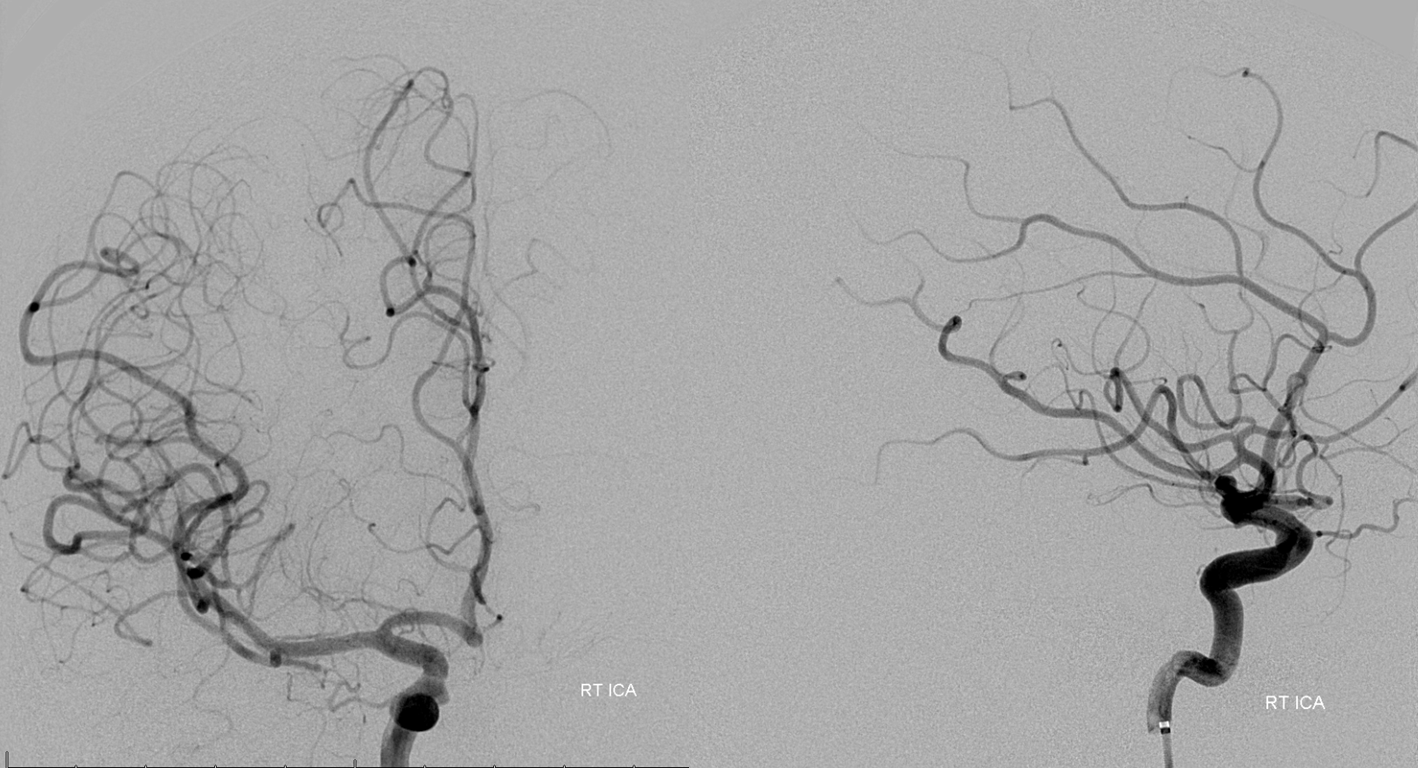Two learning points here — radial access is one. Another is that small aneurysms need small Pipelines.
This is a case of a very small right paraophthalmic aneurysm that grew over 2 years of observation
Right radial access. 5F Terumo sheath. Diagnostic: 4F VERT
Embo: Exchange 4F vert for Navien 058 115 cm. Phenom 027 150 cm
Video Here
Still shots below

Left common carotid even if nonbovive can be sometimes catheterized without need for recurved catheter. The trick is to shape the terumo glide a bit to give it a wider curve.

Right vert

Right ICA — see the aneurysm?

Working projection views of a 4 mm right paraophthalmic aneurysm. Notice how the siphon opens up to just below 5 mm in the distal horizontal cavernous segment. Notice the 5F navien in the distal cervical segment. It will be advanced into the cavernous segment following Phenom catheterization. The approach again is the same. 5F radial sheath. Navien 058 115 cm. Phenom 027 150 cm

The usual approach is to size to the proximal landing zone. However that would mean using a 5 mm device — in fact the proximal horizontal cavernous segment is 5.5mm. Also, using a 5mm device would guarantee minimal metal coverage of the aneurysm neck — probably something like 18 % coverage if a 5 mm device is used in a 3.7 mm vessel. See table below
Here are some measurements

So, the point is to use a short stent that is delivered precisely. A 4×10 will do. Here is the result — the device stays in the ophthalmic segment and is fully apposed to the vessel wall. Short and sweet

Post-PED subtracted images

Radial sheath injection, as usual. Both radial and ulnar show antegrade flow. There is some straightening of radial artery curve seen just past the point of sheath entry however antegrade flow continues

See other radial Cases here
